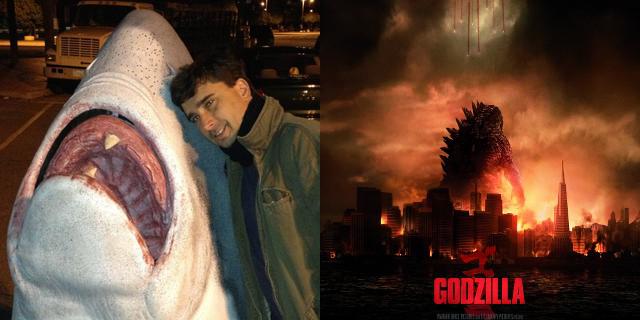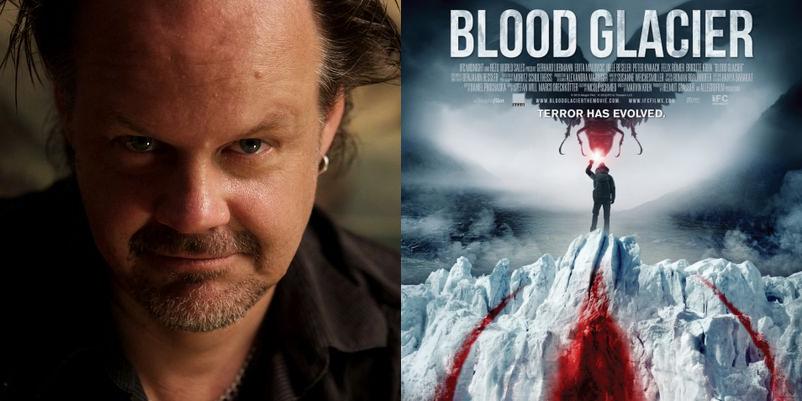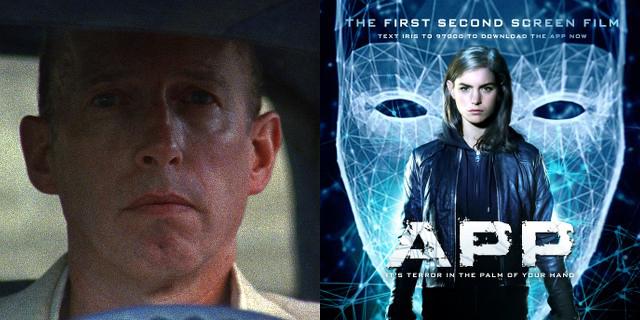If there’s one thing this new age of movie blockbusters have spawned, it is an increasing trust studios have taken in giving out-of-the-box directors huge tentpoles to bring their unique sensibilities to.
It’s not a new trend. Tim Burton wasn’t the obvious choice to bring 1989’s Batman to the big screen with only Pee-wee’s Big Adventure and Beetlejuice under his belt up until that point, but he proved he was a wise choice.
In the early 2000s, Sam Raimi adapted Spider-Man for the big screen, and anyone who loved Raimi’s Evil Dead work knew he was up for the task and then some. Even Guillermo del Toro brought his visionary arthouse sensibilities to the action-packed and visually arresting Hellboy films.
Toss in recent examples such as actor/Shakespeare-loving director Kenneth Branagh tackling superhero God Thor, (500) Days of Summer helmer Marc Webb masterminding on the Amazing Spider-Man reboot, and most importantly uber-geek and Buffy guru Joss Whedon spearheading the mother of all superhero movies, The Avengers, and it’s refreshing to see a wide range of people taking on huge budgets and major risks and still hitting home runs.
There are many other filmmakers who could be listed here, but you get the point. We’re in a new age of studio moviemaking where your name doesn’t have to be Cameron, Spielberg, Emmerich or Bay for you to be granted the keys to a major franchise. Studios may be risk averse, but they realize it’s important to take major chances nowadays to set your big event film apart from the pack.
This, of course, brings us to Gareth Edwards, the fantastic filmmaker who brought us the low-budget, thought-provoking Monsters, which had some impressive VFX work (mostly done by Edwards himself) and proved you didn’t need $200 million dollars to create an intelligent, entertaining film.
Edwards’ work on Monsters attracted the attention of Warner Bros. and Legendary Pictures, who gave him the plum assignment of re-envisioning Godzilla after 1998’s last major studio attempt at bringing the big old lizard stateside.
In many respects, Edwards tackles Godzilla from the opposite end of the universe that director Roland Emmerich did. This film is much more serious and avoids the cheeky sense of humor prevalent through the Emmerich film. It’s also not altogether a remake either. It’s a movie that pays homage to the roots of Godzilla and the original 1954 film set in Tokyo that started it all, while reintroducing the lumbering, city-crushing monster as mankind’s savior (after all, there is “God” in his name).
Edwards does many things right with his reinterpretation of the saga, most notably setting up an origin story not for Godzilla, but for the new nameless, monstrous villains that Godzilla has to tackle throughout the film.
What fascinated me the most about Godzilla was the incredible restraint that Edwards shows in the film. It takes at least an hour for Godzilla to make an appearance and that buildup really aids in making his first full-on moment on screen even more important. Edwards takes a page from Jaws (and the original Alien) in that respect (heck, one of the main characters’ last name is Brody, so it’s safe to assume Jaws provided some inspiration).
Some of the most amazing and subtle work in Godzilla is this prelude to the monster. Shots of the aftermath of destruction, imprints in the ground. It’s all well orchestrated. Edwards could have done whatever he wanted with this film and made it a wall-to-wall orgy of VFX acrobatics, but instead he spends ample time crafting a strong family story, a backstory, an origin story and a logical reason for Godzilla to appear before he really gets into the action.
And then the fireworks begin with Godzilla and his new adversaries tearing up the screen the only way they know how – toppling buildings and tossing each other around like skyscraper-sized wrestlers.
While some filmmakers from the indie world have a harder time adapting to the studio system, which oftentimes neuters their strengths in order to achieve mainstream appeal, Edwards does what he did in Monsters – put his strength in the slow-build and precise visual effects necessary to beef up the story.
One of the most gorgeous shots of the film is when soldiers leap from the helicopters and rain down from the sky, trailing a beautiful layer of red smoke. The time spent on capturing this elegance without cutting away too soon really sets up why this film does so many things right – it’s not in any hurry. It knows it’s going to get to the big pay-off, but it wants to give a little nuance and texture along the way so there isn’t a redundancy and sameness throughout.
And that is one of the keys. Edwards picks and chooses his VFX battles. So many VFX studio films cram in so many quick-cut visual effects moments that the magic of them is sometimes lost among music video-styled editing. That’s not the case here. You really get to absorb moments and see the beauty that went into making each shot. That’s not to say there isn’t a VFX orgy by movie’s end – there is – but Edwards’ restraint is fabulous.
What’s also important is he’s managed to not forget where he came from and used his indie low-budget roots to benefit a big studio movie (which is probably why the budget of Godzilla was kept around $160 million instead of the $250 million of most summer blockbusters).
Another thing I appreciated was creating a relatable storyline with a strong family element and an everyman hero on the frontlines – so the audience can be engaged with some other major stake other than whether Godzilla will be triumphant.
Bryan Cranston plays Joe Brody, while Aaron Taylor-Johnson plays his grown-up son, Ford. Both characters try their best to make sure their families and loved ones are safe amidst a growing monster threat. Yes, you have to put your heroes in the wrong place at the right time for ample conflict, but that’s the key to these films in many respects (we even did it in the Sharknado films by bringing in the excellent Ian Ziering to be our everyman hero). You want to follow your heroes through their motions because you can relate to what they’re doing. If you have Arnold Schwarzenegger going toe to toe with the Toho monsters and the destruction in their wake, you have a strong inkling he’s going to make it out alive. With Cranston and Taylor-Johnson, they are obviously not indestructible; they bleed and they don’t have super Austrian strength to protect their bones from crushing like little girly men. That’s why you follow them on their journey and why each individual payoff of getting back to their family and saving their family means so much throughout the film.
For me, one of the hardest things in watching any summer tentpole movie is seeing all the luxury they have in making them. With 18 days (like we’ve had on the Sharknado films), you can’t make a perfect film, you have to rush through 10 pages a day some times, the postproduction schedule is rushed and you have to find immediate creative solutions to not having a money hose to make your limitations go away. Additionally, you have to be very strategic in how to use your visual effects. Watching a film like Amazing Spider-Man 2 or Godzilla, I’ll often go, “Hey, they had 50 VFX shots in a row … not fair.” But I also feel like it’s a great learning tool as well. When I see Edwards employ his filmmaking style of Godzilla in the same manner of Monsters despite a bigger budget and scope and more shooting time, it reminds you that by getting pulled into the studio system you can still retain your point of view and your own imprint while still delivering a mainstream popcorn movie.
Godzilla is a refreshing change of pace from regular summer movies. It doesn’t do things the easy way and it’s better for it. Not every big summer movie has to hit you over the head to entertain, but with great power, comes great responsibility. Edwards has handled things quite nicely and I can’t wait to see him take his aesthetic forward, whether it’s on Godzilla 2 or something even bigger than big old fire breath.






